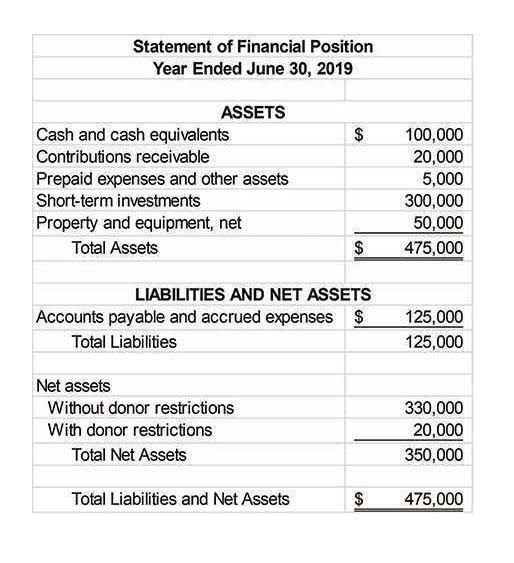
Check out these 11 small business accounting terms you should know to help increase your accounting acumen. To make things easy, always use your business bank account and/or credit card to pay for everything business related. Use your personal bank account to pay for your personal and home operating expenses. From managing transactions to tracking salary payments, doola’s bookkeeping services keep your finances organized and IRS-compliant. Once you’ve settled on a business name, you’ll need to register your business in the state in which you will do business. This guide dives into the different aspects of sole proprietor accounting software, including benefits, features to look for, and recommendations for informed decision-making.

Why Make the Switch from Sole Proprietorship to S Corporation?
While you can certainly do this as a sole proprietor, an S Corp offers more structure and allows you to establish formal payroll systems, benefits, and other employee-related matters. Investors typically prefer to invest in corporations due to the structure and clear separation between personal and business assets. Individuals who are successful bookkeeping professionals are highly organized, can balance ledgers accurately, have an eye for detail and are excellent communicators. You can look at freelance sites, such as Upwork, to see what others are charging for bookkeeping services, but you can also learn a lot by asking around. Talk to businesses in your area to see what they are currently paying for bookkeeping services. Talk to people in your network who are also bookkeepers and ask what they are charging.

Step 5: Review your financial statements
You can further analyze your balance sheet and get insight into your business using financial ratios. Cash is always listed first, followed by the rest of your assets, based on how quickly each asset can be converted into cash. By leveraging this flexibility, sole proprietors can stay ahead in fast-paced industries where responsiveness is key. Regularly reviewing account balances is essential for maintaining accurate bookkeeping.

Using cloud bookkeeping software

We’re firm believers in the Golden Rule, which is why editorial opinions are ours alone and have not been previously reviewed, approved, or endorsed by included advertisers. The Ascent, a Motley Fool service, does sole trader accounting not cover all offers on the market. The Motley Fool Ascent is 100% owned and operated by The Motley Fool. If you opt to not link your software with your bank, you will need to reconcile you accounts manually. Whichever way you do it, it’s important to complete the process on a regular basis. If you’re using double-entry accounting, which is recommended, you will have a corresponding credit entry for any debit entry you make, and vice versa.
- If you absolutely want to be connected with hundreds of apps that offer hundreds of tasks, Xero may be right for you.
- These records contribute to determining the business’s profitability and are essential for reporting purposes, including sales tax calculations.
- Once you have this information in place, find a good payroll service provider, and get ready to hire your first employee.
- Double-entry accounting uses a debit and a credit when making an entry.
- Both the cash account and the accounts receivable account are assets.
- Based on the nature of your business, you might decide to offer credit to customers.
Tip # 2 – Never exclude yourself from the payroll
Understanding the timing of income and expenses is crucial in deciding between cash and accrual methods. In managing the financial aspects of a sole proprietorship, one must answer several key questions effectively. To assist in this important task, here is a compiled list of frequently asked questions covering the essentials of sole proprietorship bookkeeping. Limited Liability Companies (LLCs) combine the liability protection of corporations with the tax benefits and simplicity of sole proprietorships.

- Recording can be pretty time-consuming (especially if you’ve been putting it off), which is where accounting software like Wave’s can help.
- In other words, the expense for the electric bill is recorded when the bill is paid; not when it’s received.
- Each transaction is recorded into the system in the identified category (called an Account) using the known amount.
- These will help you analyze your financial transactions and identify areas where you may lose money.
- Remember, meticulous bookkeeping not only facilitates day-to-day operations but also sets the foundation for sustainable growth.
However, once you ride the troubled patch and get retained earnings balance sheet back up, you must reimburse your account with those funds. So, later, you won’t have to go back and forth to balance your books. The equity section gives you the net worth of your business, which is the value of all your physical and non-physical assets. Moving money from one account to another is like moving a five dollar bill from one pocket to another.
While you could handle accounting for your small business on your own, you may consider outsourcing it to an accounting professional. For instance, you might choose to start your fiscal year on July 1 and end it on June 30 of the following calendar year. Or you may choose a more traditional approach and have your fiscal year follow the https://www.bookstime.com/ standard calendar year, depending on what works best for your business. If you operate a seasonal business, for instance, then you may choose to begin your fiscal year at the beginning or end of your peak sales season. If you decide to extend credit to customers, you will need a consistent system of creating and sending invoices.